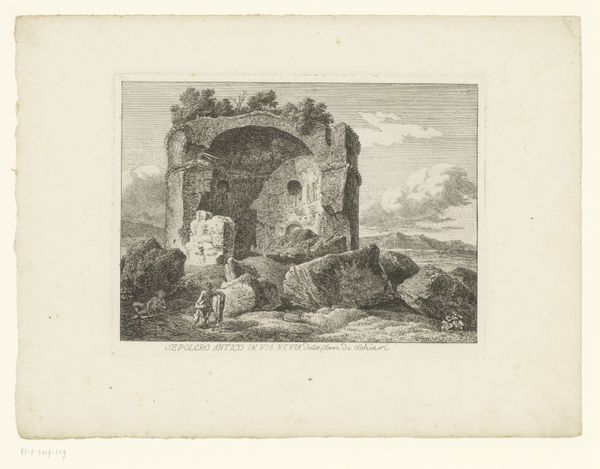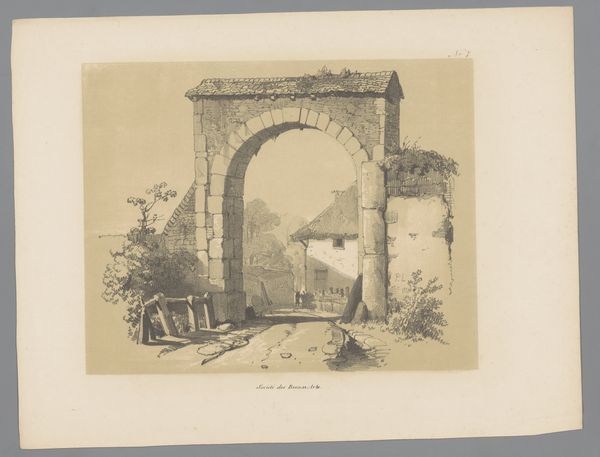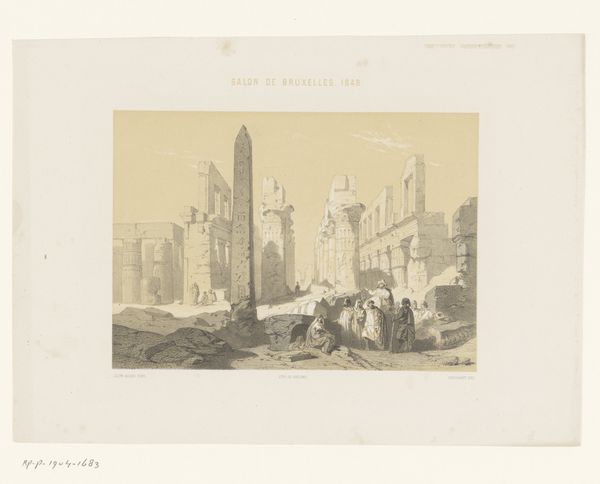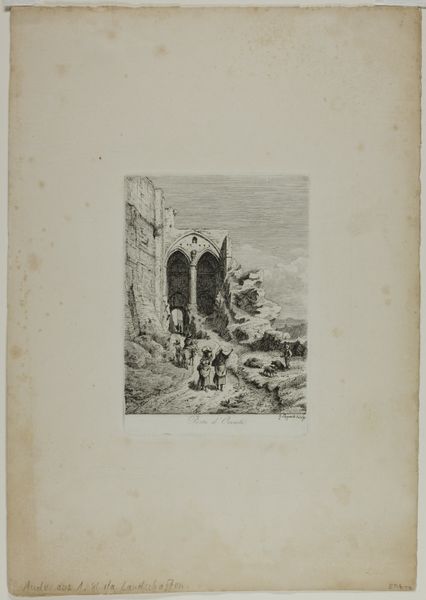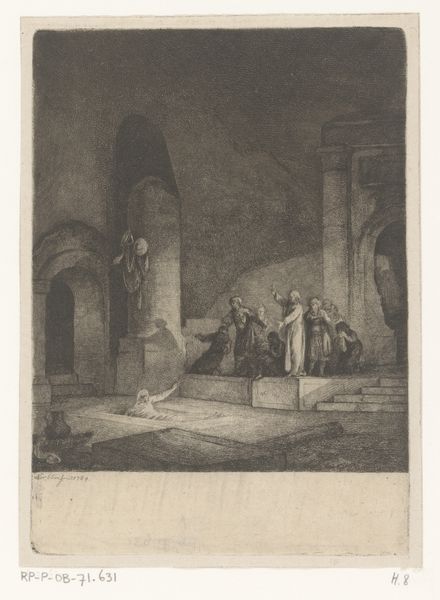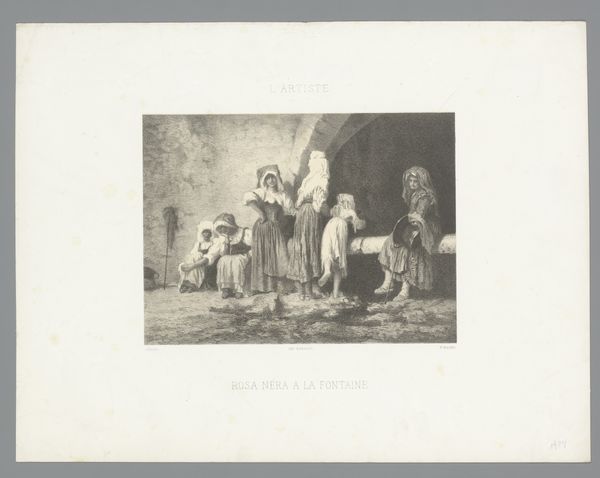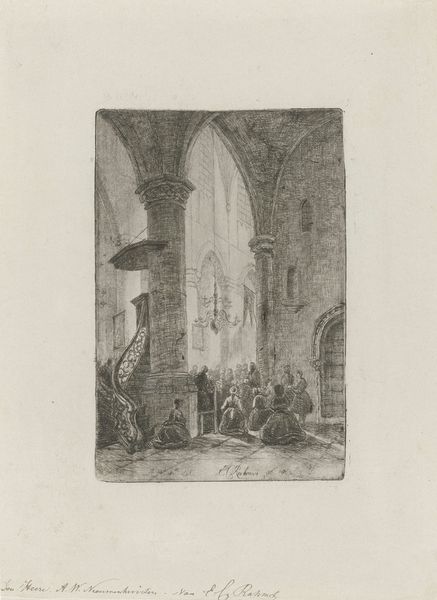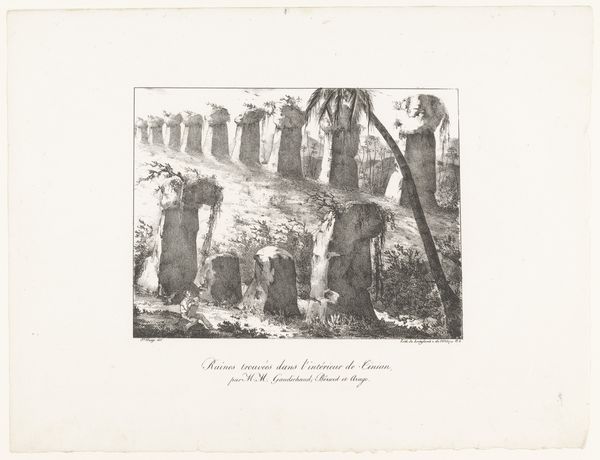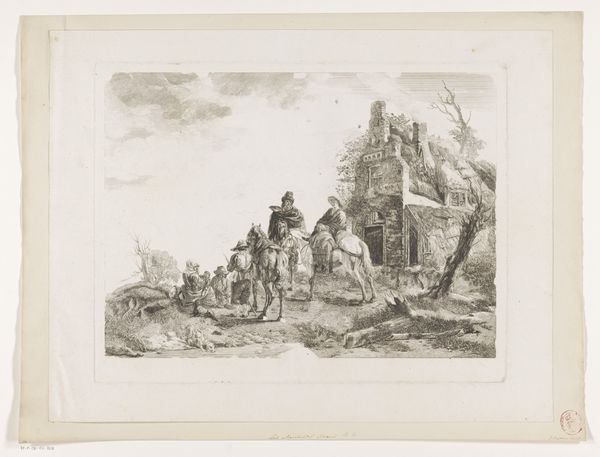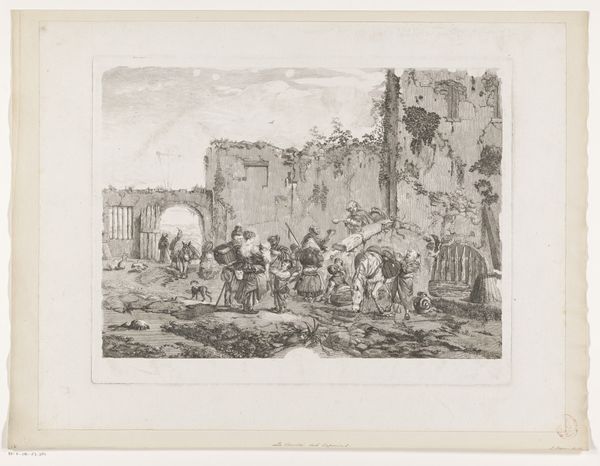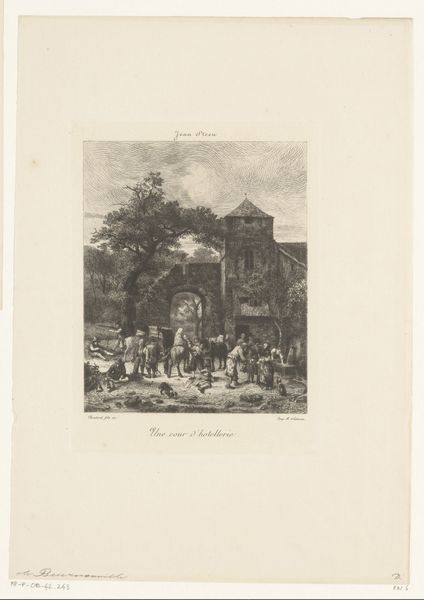
drawing, print, paper, engraving
#
drawing
#
narrative-art
# print
#
landscape
#
classical-realism
#
figuration
#
paper
#
romanticism
#
cityscape
#
history-painting
#
engraving
Dimensions: height 425 mm, width 572 mm
Copyright: Rijks Museum: Open Domain
Editor: This is "Artists in the Ruins of Alba," an engraving by Jean Louis Tirpenne, made around 1824 to 1826. It's quite a striking image, filled with the romantic vision of artists sketching amidst ancient ruins. It feels like a commentary on the past and present, but what’s your interpretation? Curator: It is fascinating how Tirpenne uses this ruin as a stage. He's not just documenting a landscape, he's showcasing a performance, if you will. We have these figures, artists supposedly, within a site of historical significance, perhaps even imagining their place in history, too. Consider the period, the rise of Romanticism. How do you think this setting—these crumbling structures—speaks to Romantic ideals? Editor: I suppose the ruins emphasize a sense of awe and the sublime. The vastness of history against the smallness of human existence... It’s all very dramatic. But are they *really* artists? Is Tirpenne perhaps romanticizing a creative class? Curator: That’s a good question. In thinking about Romanticism, we tend to center individual experience and genius, however the artist-figure carries significant political weight. Art academies became popular during this time, raising debates about how artists should depict nature, how the legacy of past artworks ought to be understood, and of course the role of the museum as the prime educational institution of the Western world. Notice how they are clustered in small groups, sharing insights, but not *inside* of an institutionalized setting. They're in the ‘real’ world of art making. Editor: So, this image is really making a statement about where art should be made and how. Is this maybe a kind of counterpoint to academic art, setting artists free? Curator: Exactly. Think about what wasn’t included: rigid rules, stuffy interiors, limited settings... This choice speaks volumes about a desire to liberate art and artists. That also implies questioning and disrupting prevailing artistic norms of his time, right? Editor: Absolutely. I see that tension now—the artists free from, yet engaging with, a loaded site of history and the social mores of the artworld. It definitely shifts my perspective. Curator: Indeed. Art provides this very means, through creative approaches, by critiquing norms of any particular culture or context.
Comments
No comments
Be the first to comment and join the conversation on the ultimate creative platform.
